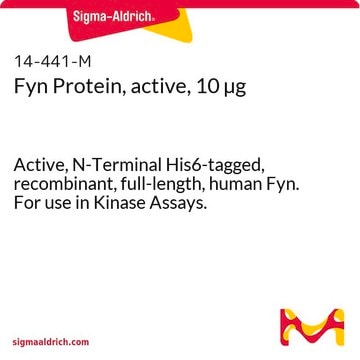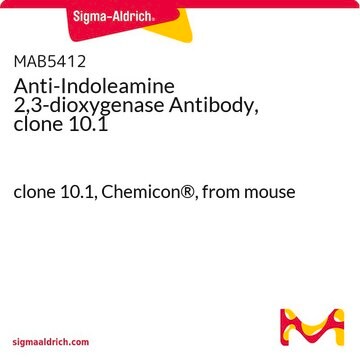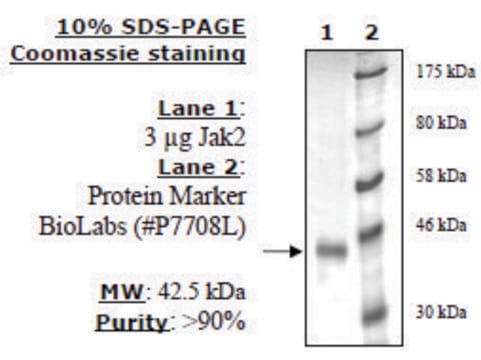Kluczowe dokumenty
Z2126
ZAP-70 Tyrosine Kinase human
≥90% (SDS-PAGE), recombinant, expressed in baculovirus infected insect cells (Histidine tagged), buffered aqueous glycerol solution, ≥150 U/mg
Wybierz wielkość
3680,00 zł
Wybierz wielkość
About This Item
3680,00 zł
Polecane produkty
rekombinowane
expressed in baculovirus infected insect cells (Histidine tagged)
Poziom jakości
Próba
≥90% (SDS-PAGE)
Formularz
buffered aqueous glycerol solution
aktywność właściwa
≥150 U/mg
masa cząsteczkowa
70 kDa
numer dostępu UniProt
Warunki transportu
dry ice
temp. przechowywania
−70°C
informacje o genach
human ... ZAP70(7535)
Zastosowanie
Działania biochem./fizjol.
Definicja jednostki
Postać fizyczna
Kod klasy składowania
10 - Combustible liquids
Klasa zagrożenia wodnego (WGK)
WGK 1
Wybierz jedną z najnowszych wersji:
Masz już ten produkt?
Dokumenty związane z niedawno zakupionymi produktami zostały zamieszczone w Bibliotece dokumentów.
Active Filters
Nasz zespół naukowców ma doświadczenie we wszystkich obszarach badań, w tym w naukach przyrodniczych, materiałoznawstwie, syntezie chemicznej, chromatografii, analityce i wielu innych dziedzinach.
Skontaktuj się z zespołem ds. pomocy technicznej







